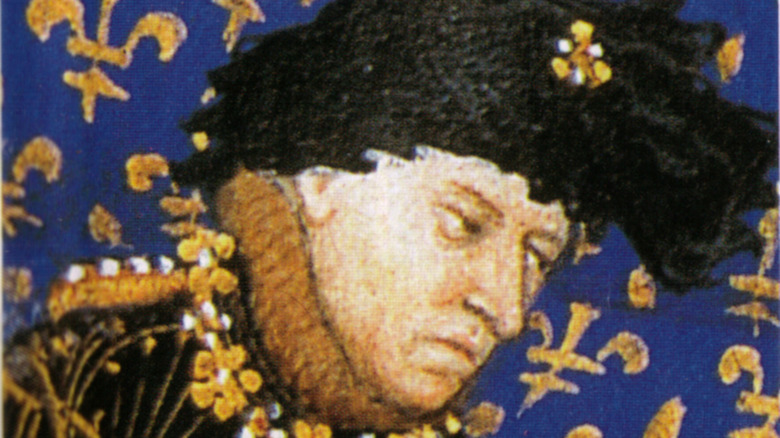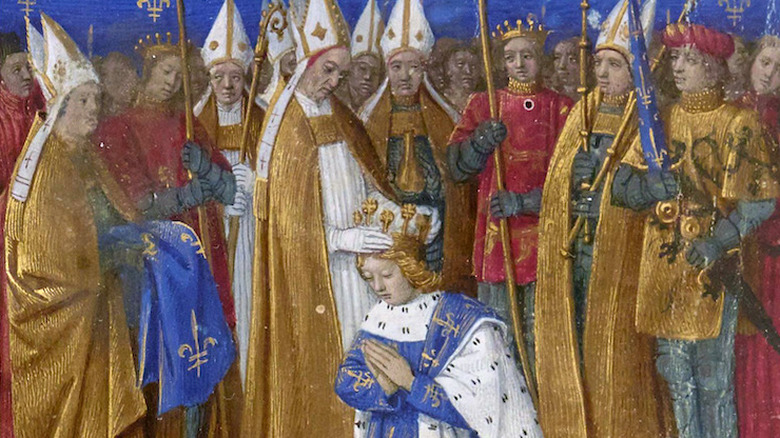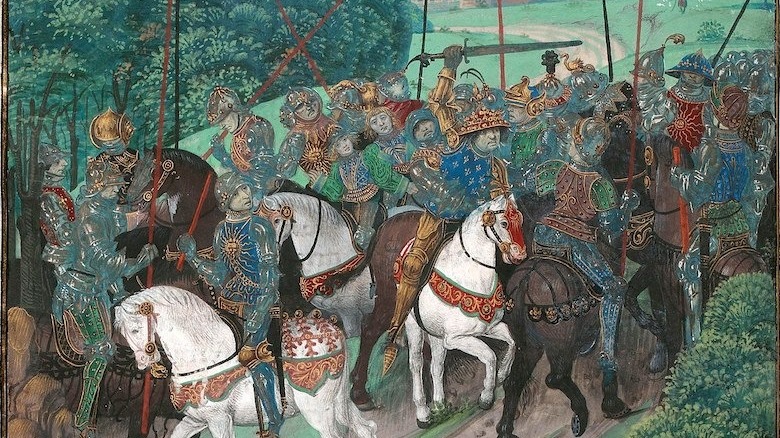This Was The Problem With Charles VI Of France's Reign
These days, we're probably all used to reading stories of royals behaving badly. But let's face it — practically all of these high and mighty modern-day people with titles are saints compared to the royals from centuries past. To be more specific, we're talking about kings, queens, and other monarchs from the Middle Ages, when it wasn't uncommon for kids below the age of 10 to spend the rest of their childhood in servitude to other families. That was how it was for commoners — children from royal families, on the other hand, could be crowned king or queen well before what we refer to in modern times as drinking age. Combine that with an overall lack of maturity in many cases, and it shouldn't surprise anyone that George R. R. Martin made King Joffrey such an insufferable brat in his "A Song of Ice and Fire" novels.
King Charles VI of France was one of the many child rulers in medieval times, and his story is quite an interesting one. For one, he was crowned king at a very early age, following the death of his father, Charles V. But what really stands out is how he had two royal nicknames, one that represented the promise he showed as a ruler upon reaching young adulthood, and another that referred to the main reason why his reign was such a problematic one in medieval France.
Charles VI was originally known as the 'Well-Beloved'
In the beginning, Charles VI's rise to power was rather inauspicious. He was, after all, a king in name only; he was crowned king of France on October 25, 1380, at the tender age of 11, and was a figurehead who let his uncles call the shots for the first eight years of his reign, according to Britannica. Philip the Bold, Duke of Burgundy, was the most involved of Charles' regents, and in 1388, he advised his nephew to head to England to battle Duke William of Gelderland. Instead of waging war, however, Charles called a truce with William, and soon after, he declared an end to the regency and chose to rule on his own.
Charles VI took up personal rule on November 2, 1388, just a few weeks short of his 20th birthday. Things ran smoothly at first, as the young monarch recalled the Marmousets, the previously exiled advisers of his late father, Charles V. The Marmousets spent the next few years initiating reforms, and France was in peace talks with England, seemingly inching closer to ending what would eventually be known as the Hundred Years' War (spoiler: it would last another 60-plus years). Everything was looking up for "Charles the Well-Beloved," as he was known, but in 1392, he came down with a fever and convulsions, marking the first of what would be nearly four dozen psychotic episodes.
Charles the Mad: Glass delusion and violent rages
As a result of his quickly deteriorating mental health, Charles VI earned himself a new sobriquet — Charles the Mad. According to Britannica, the French king's attacks of madness typically lasted between three to nine months, after which he would return to sanity for about three to five months. With his mental health compromising his authority over France, he was back to being a figurehead king as the dukes of Burgundy and Orleans engaged in a bloody feud over which of them would rule the country.
Just how did Charles' mental instability manifest itself? As explained by BBC, he suffered from a condition known as glass delusion, which meant Charles perceived himself as being made out of glass. As he believed that his body would break with the slightest of contact, he forbade his subjects from even touching him, and would sit perfectly still for several hours so that he could avoid shattering into a million pieces (via ListVerse). It was also written that in a further effort to protect himself from breaking, he wrapped himself up in multiple blankets.
During the winter of 1395-1396, Charles' delusions had gotten so bad that he was unable to recognize family members; per Factinate, at one point he was under the impression that he was actually St. George. He was also prone to violent behavior, as he would reportedly verbally and physically abuse his wife, Queen Isabeau, and murder his own knights during his rages.


